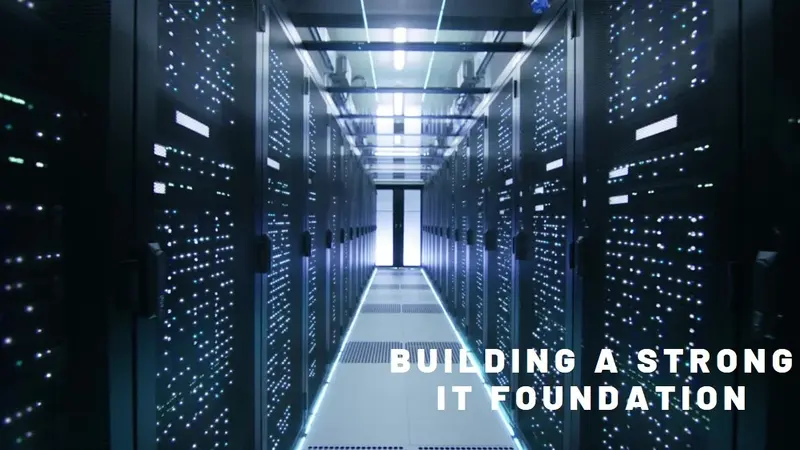IT infrastructure refers to the combined set of hardware, software, networks, and services that support the delivery and management of an organization’s information technology environment. For small businesses, a solid IT infrastructure is crucial for daily operations, communication, data storage, and access to essential applications. It includes everything from servers and routers to cloud services and collaboration tools—all working together to keep the business running smoothly and efficiently.
Small businesses must think beyond the basic setup to build a robust IT infrastructure. Ongoing maintenance, scalability, and protection are key to long-term success. One critical area is network security monitoring, which helps detect and respond to suspicious activity across systems before it becomes a serious threat. This adds a crucial layer of defense to the business’s digital environment. By investing time and planning into these components, companies can create an IT foundation that meets current needs and supports future growth.
Key Components for Small Businesses
Creating the proper IT infrastructure begins with essential components. A reliable internet connection is crucial; connectivity issues can hinder productivity. Secure Wi-Fi networks with strong encryption and complex passwords protect against unauthorized access. A solid data backup strategy, including physical and cloud-based options, ensures information is recoverable after a disaster.
Endpoint devices like laptops and smartphones should have the latest operating systems and security updates to minimize vulnerabilities. Cloud storage and applications enhance collaboration and remote work, while unified communication platforms improve responsiveness and efficiency. Combining flexible cloud resources with robust in-house hardware helps small businesses compete with larger organizations.
Why Getting IT Right Matters
A resilient IT setup is crucial for a company’s performance under pressure. IT downtime can cost small businesses hundreds to thousands of dollars per hour, leading to delayed services, frustrated customers, and lasting reputational damage. Studies show that downtime halts productivity and incurs additional recovery expenses. Small organizations can face issues, such as a retail shop losing point-of-sale access during busy hours or a project-based firm missing deadlines due to data loss. When IT functions smoothly, staff can innovate, provide quicker support, and meet changing customer needs.
Planning Your IT Basics
A successful IT setup begins with assessing your current environment. List all devices, applications, and storage solutions in use. Identify any hardware over five years old and check if critical software is still receiving security updates; prioritize updates or replacements for outdated systems. Slow network speeds can hinder productivity.
Implement redundant backups (one local and one offsite) using automated tools and regularly test them for restoration efficiency. Establish clear policies on device use, internet browsing, and password management to promote a security-conscious culture. Conduct annual or quarterly audits to identify and address potential risks before they escalate.
Cybersecurity Foundations
Effective cybersecurity programs start with clear, consistent steps for all devices, from the CEO’s laptop to checkout tablets. Maintaining up-to-date antivirus protection, properly configured firewalls, and timely software updates are essential to prevent breaches.
Human error often leads to data breaches, so staff should be trained to recognize suspicious emails and unexpected attachments. Implementing two-factor authentication adds an extra layer of security for sensitive accounts. Regular security workshops can reinforce these best practices for the entire team.
Modern Trends for Small Teams
Small businesses are navigating a rapidly changing technology landscape. The rise of cloud collaboration tools allows teams to work flexibly and securely from anywhere while automating routine tasks, saving time for growth and customer engagement. Zero-trust network models are becoming standard, making unauthorized access more difficult. Staying informed about business technology trends helps small businesses remain resilient and proactive in seizing opportunities and addressing potential threats.
Building Cost-Effective Solutions
Success often comes from spending smarter rather than just more. Modular IT solutions, cloud subscriptions, and scalable infrastructure allow small businesses to pay only for what they need and expand as necessary. Managed IT support provides peace of mind by proactively addressing issues, often saving money compared to fixing major problems later. Look for flexible solutions that enable easy additions of users or features without costly upgrades. The right blend of people, processes, and technology can enhance performance and boost employee and customer satisfaction.
